How to Get Rid of Oriental Bittersweet & Take Back Control of Your Yard
Control oriental bittersweet vine in your yard before it takes over. Beautiful Fall blooms yet so destructive.
Today, I am going to discuss a problem many homeowners face. When Oriental Bittersweet vines are left unrestrained, they consume your entire yard. Oriental Bittersweet vines make beautiful Fall wreaths. The attractive yellow red cluster blooms appear in the early Fall. Although the blooms are attractive, they contain the seeds that produce the vines. The seeds grow into aggressive, invasive vines that are destructive.
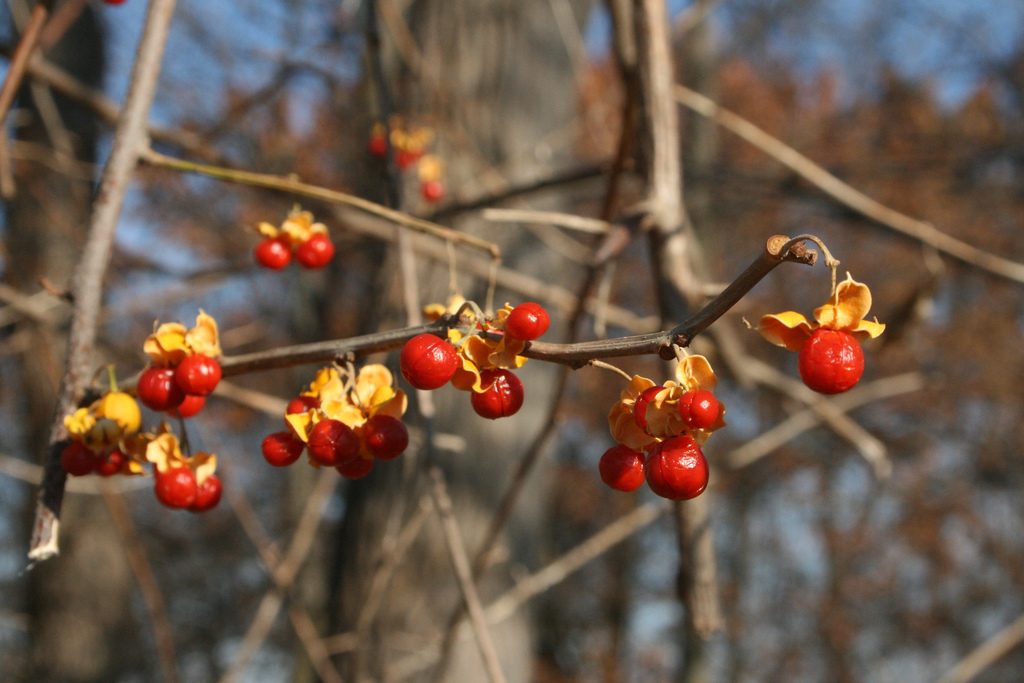
What is Oriental Bittersweet?
The scientific name of Oriental Bittersweet Vine is Celastrus orbiculatus Thunb. Also known by many common names. Oriental bittersweet, Asiatic bittersweet, Asian bittersweet, Round-leaved bittersweet. Climbing spindle berry and Oriental staff vine.
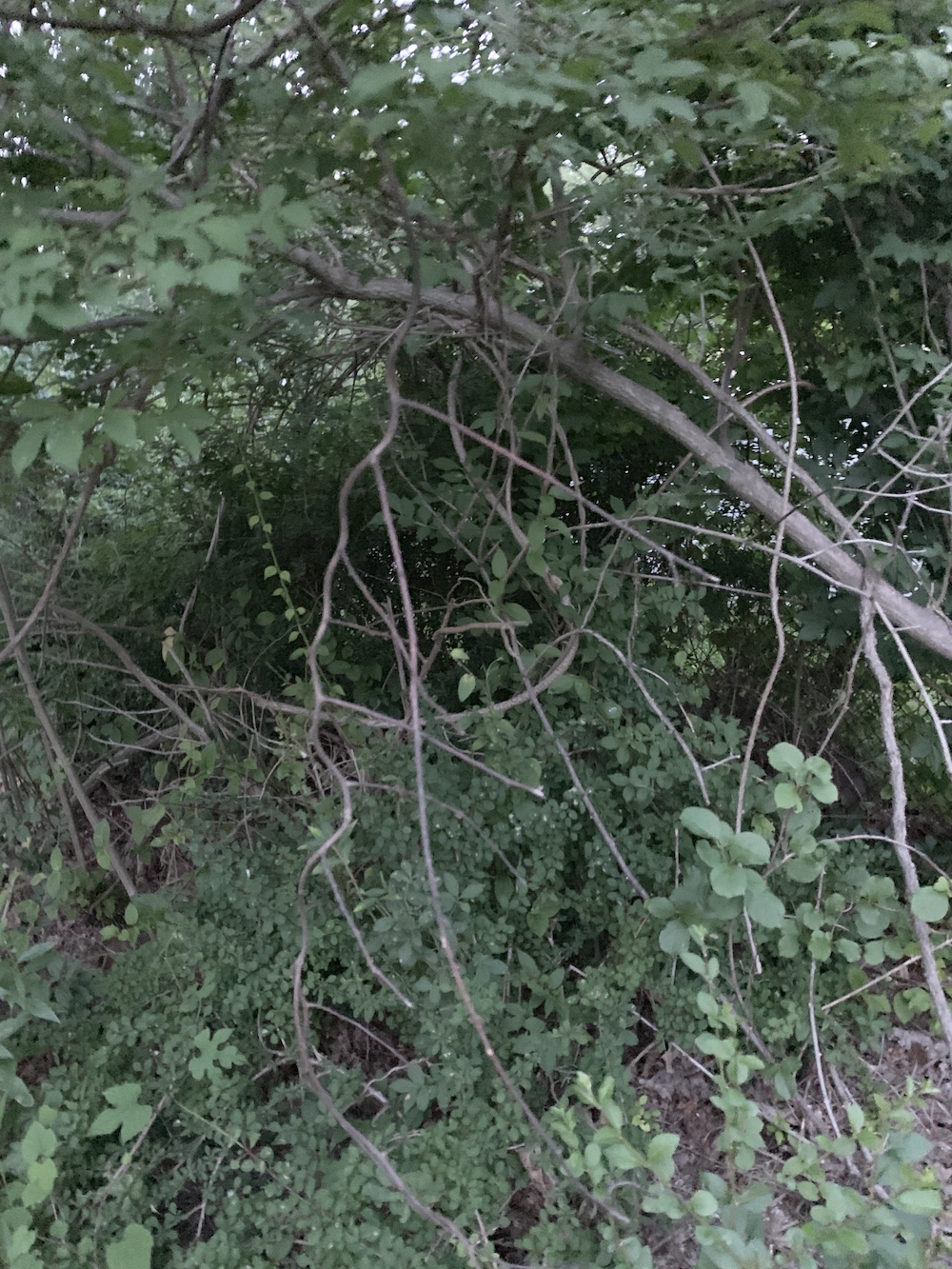
Oriental Bittersweet Origin
The oriental variety is an Eastern Asian native vine (Fryer 2011). Native to China, Japan, and Korea. Introduced in the US in the 1860s. Originally used as an ornamental vine and for erosion control purposes. The deciduous woody, vines wrap themselves around plants, shrubs, trees, and anything else it can scale. As the vine grows, it chokes plants, shrubs, and trees. Weight of the vine can bring down entire trees over time. A rapidly spreading vine can grow 60 and up to 90 feet long.
[Fryer, J.L. 2011. Celastrus orbiculatus. In: Fire Effects Information System. U.S. Department of Agriculture, Forest Service, Rocky Mountain Research Station, Fire Sciences Laboratory.]
Oriental Bittersweet Description
If you are unfamiliar with Oriental Bittersweet, we assure you it is destructive. Destructive to the garden, yard, landscape, and home. Oriental bittersweet is an invasive, climbing woody, non-native vine with dense foliage. The vines engulf garden plants and other structures. Vines attach to plants, shrubs, trees, sheds, and fences. As it grows, it wraps itself around what it is climbing.
As a result of this, the vines smother the plant, shrub, or tree that it is attached to. If allowed to grow unrestrained, it can wreak havoc on your entire landscape. Aggressive oriental bittersweet can do considerable damage in a single year alone!
Oriental Bittersweet Size at Maturity
Mature Oriental Bittersweet stems grow up to 4” and more in diameter. It climbs large trees and expands well over 60’ high. Green fruit clusters become yellow or bright orange in late Summer. In early Fall, the membranes split and bright red fruit appears. Each bittersweet fruit holds 1 to 2 seeds. The Bittersweet seeds are spread to the surrounding areas by two methods. Either the seeds drop to the ground once the membranes have split. Or the seeds are carried off by birds. Fruit clusters are striking in appearance. The fruit clusters part of the vine is attractive and in demand during the Fall season. It is frequently used to create Fall wreaths. But beware! The seeds eventually become vines. And take hold of your yard very quickly.
Oriental Bittersweet Roots
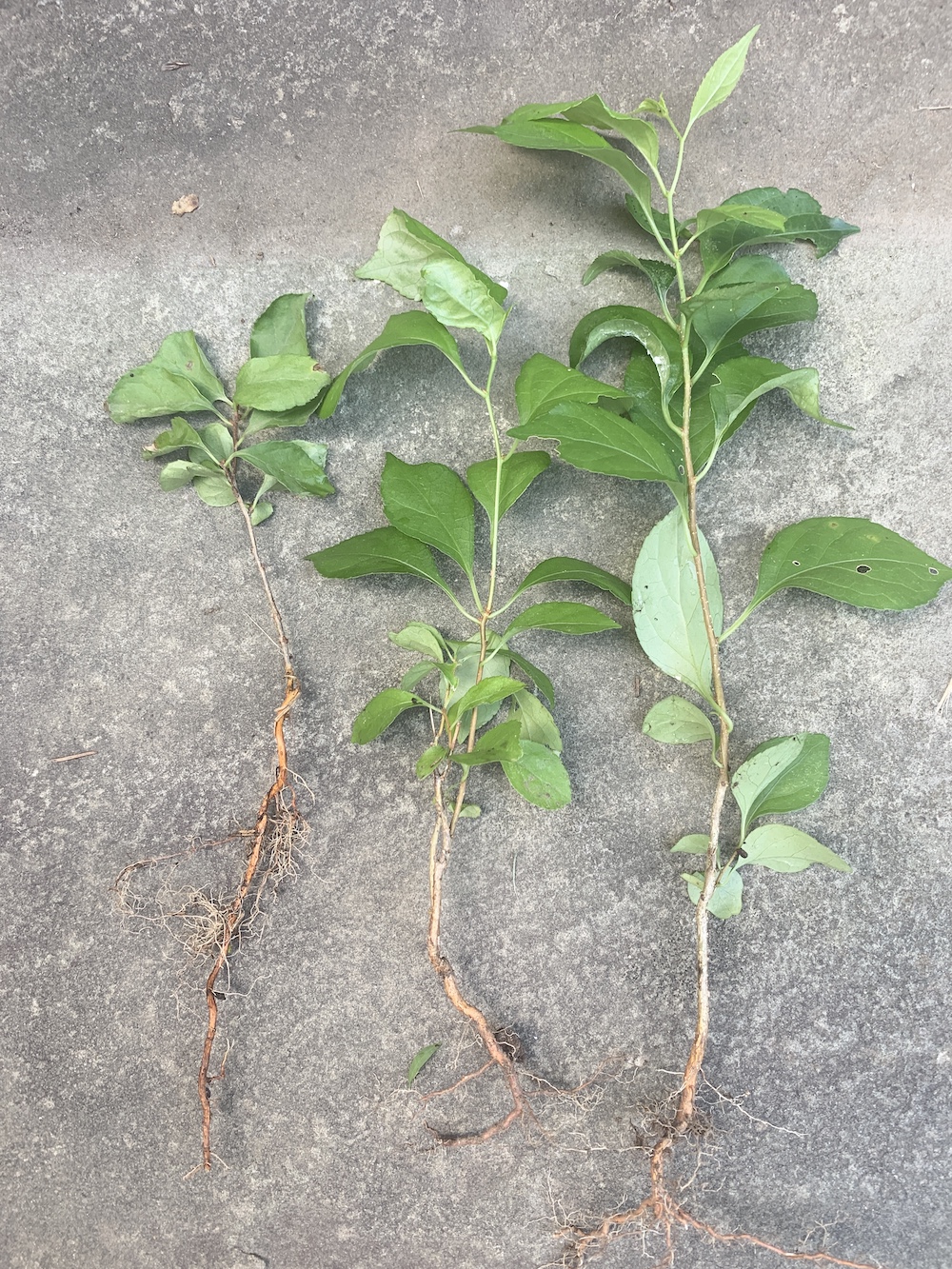
Oriental Bittersweet is an aggressive, invasive vine. It is prolific and harmful to the surrounding landscape. Oriental bittersweet roots are easily recognized. Roots are orange in color. And have an appearance of intestine-like growth pattern. We have extracted long sections of bittersweet roots 4 to 6 feet long that are 2 to 3 inches in diameter. Bittersweet roots resemble a section of human intestines although orange in color. Yuck!
How Do You Control Oriental Bittersweet?
There are two approaches to controlling Oriental Bittersweet vines. Either manually extract the bittersweet vines and roots. Or use a chemical to eradicate the vines. The manual method can be time consuming and frustrating. Manually removing the vines can make you feel overwhelmed. And even discouraged from continuing the eradication process. However, manually removing the vines is generally more effective. This is especially true with vines above ground.
A chemical method of using a herbicide with Triclopyr is effective but not always immediate. It may take a few weeks to see any improvement. The chemical method must be applied to the root system during the growing season of the Oriental Bittersweet. It is not effective during the dormant winter months when the root system is not growing.
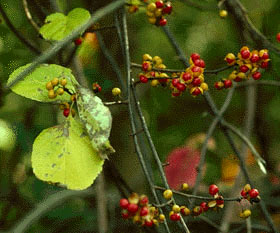
Step by Step Process of Controlling Oriental Bittersweet
Oriental Bittersweet vines on our side and backyard were overgrown, mature vines. Bittersweet vines scaled a row of younger, maple trees about 40 feet tall. About a dozen maple trees along the rear property line needed removal due to the vine damage. Damaged Maple trees were in various states of deterioration. A couple of the trees were completely covered by the Bittersweet vines. Others were anywhere from 70 to 80 percent overrun with the vines.
Removal of the Maple trees was necessary. The Bittersweet vines were strangling the maple trees which were either dead or close to dying. Oddly enough, the Bittersweet vines were supporting the strangled trees. Preventing any of the dead maple trees from falling. The entire area trees and vines need to be removed.
These are the steps we took to regain control of our backyard from the oriental bittersweet.
Step 1. Manual approach
First step – to stop the larger heavy vines from growing any further, we cut the vines. The vines with the widest in diameter were the first vines cut. These were the heaviest and oldest of the vines. To cut the widest vines we used a folding Razor tooth pruning saw. Smaller vines (less than 1 inch) were cut with a pair of loppers. Luckily, the vines can easily be cut. The woody vine is not a hardwood but a softer woody vine.
Cut Vines Climbing the Trees
Bittersweet vines were cut so that they remained between 2 to 3 feet tall from the ground. Why cut the vines at that length? Two reasons. First, we wanted to easily locate the vines when we returned to the area. The elimination of the vines using the chemical method was to be completed at a later date. Second, a fresh cut is needed to apply a chemical weed killer. The vine will seal itself once a fresh cut is made. For the best results, the weed killer needs a freshly made cut to be effective.
Control Oriental Bittersweet Above Ground Removal
We removed a few of the entwined Bittersweet vines from the maple trees but didn’t have much luck. The vines were still green at this point. A metal rake, we found works best for removing some of the vines. Since the trees were scheduled to be taken down, we didn’t spend much time removing the vines wrapped around the Maple trees. However, if the trees were to remain it is best left with the entangled branches until they have dried out. Especially when they are so far up above ground level. Attempting to pull entangled vines from a healthy tree is risky. Tree branches can break and cause injury to the tree. Or the vines can snap and whip you as you pull on them.
Allow Vines to Remain in Trees Until They Dry Out
Generally, we allow the vines to remain on the tree until they dry out. The vines that you can reach can be removed with a metal rake. Vines that you are unable to reach will drop to the ground overtime especially during a windstorm. Some of our maple tree branches still have a few old bittersweet vines that were cut down three years ago. As sections of the vine dry out, they eventually fall out of the trees.
Within the next few days, the row of maple trees were taken down by a professional tree removal service team. After the tree removal was complete, we were ready to treat the vine root system. Using the chemical approach below in step 2.
Step 2. The chemical approach
Once the professional tree removal team finished, we returned to the area with vines in the ground. Using our loppers, we made a fresh cut as close to the ground level as possible. Cut the vine as close to the vine root systems as you can. Always wear disposable gloves for protection. Apply an herbicide containing Triclopyr to the fresh cut. Use a disposable foam brush to apply the herbicide. After each cut, immediately brush the exposed bittersweet vine stem with the herbicide. In some instances, roots grew slightly below the ground level in a horizontal manner. To apply the herbicide to those roots, we made a notch on the root then applied the herbicide.
Control Oriental Bittersweet – Effects of the Herbicide
The Bittersweet root system absorbs the herbicide. Herbicide travels and infects the entire root system. Herbicide slowly kills the root system. Bittersweet roots turn completely black when they are dead.
Again, the herbicide is most effective on fresh cuts. Apply herbicide as close to the root system as possible. Herbicide application is applied only during the growing season when the roots are active. Effects of the herbicide is to stunt the root growth. And eventually kill the vine from the inside of the root system. For best results, apply herbicide to the vine root system on a dry day. Then the treated vine should remain dry for a minimum of 24 hours.
Control Oriental Bittersweet – Protect Surrounding Areas
Another consideration is the proximity of other garden plants. Herbicides will damage surrounding plants if accidentally applied to them. We noticed one vine root grew right next to a Maple tree root. The Maple tree was a mature 50 foot tall tree. A tree we did not want to lose. Sometimes it is better to manually extract the roots rather than risk losing other garden plants.
When using herbicides, protect the surrounding areas. Lay a tarp or clear plastic to the garden areas.
Step 3. Root Removal
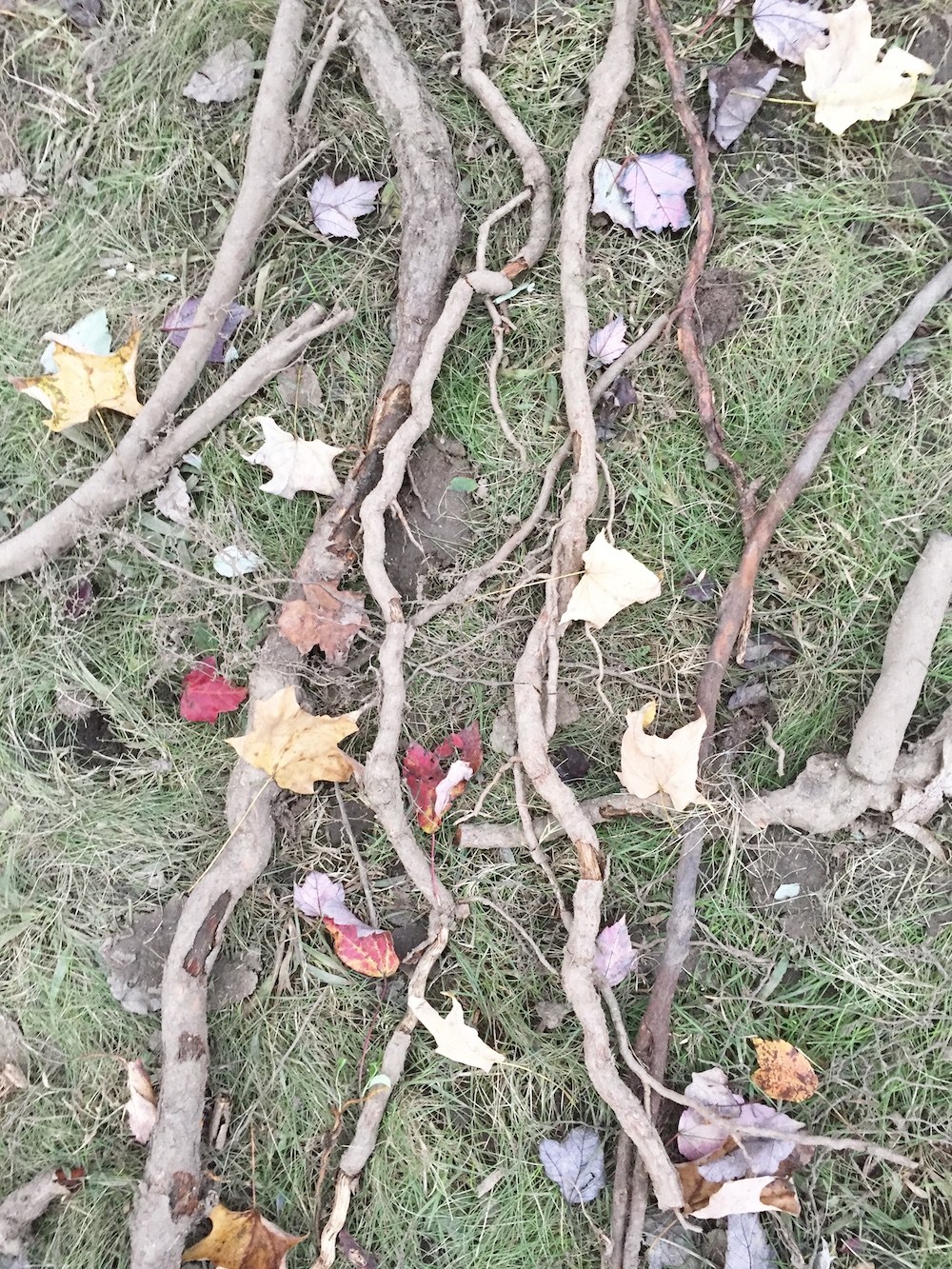
After several weeks, we removed the dead bittersweet roots in the ground. Most of the root system should easily be pulled up from the ground. Any part of the root system that couldn’t be pulled up, could be cut out of the ground. We found the vine root system to be quite extensive within our yard. Most of the backyard had several layers of roots growing below the soil surface. So incredibly invasive!
Step 4. Oriental Bittersweet Disposal
We were careful to dispose of the bittersweet vines and root system. Both vines and roots were bagged. And placed with garbage for the landfill. None of the bittersweet made its way to our compost bin. You never want any seeds or partial root systems to take hold of the compost bin.
Terrain Shop, Westport, CT
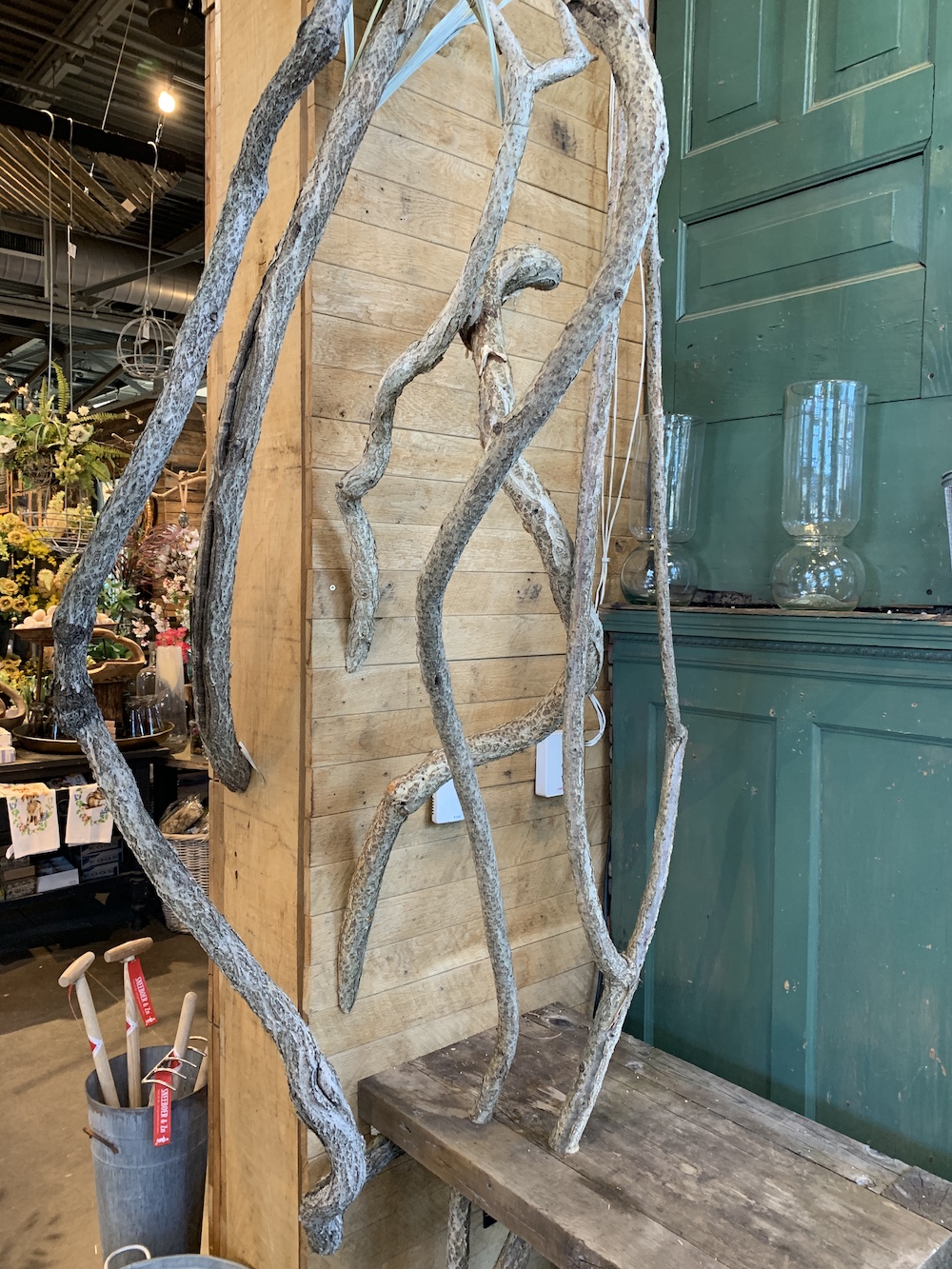
Terrain at Westport, Connecticut. Store display of Oriental Bittersweet Vines at their Westport location. Hmmm. One person’s junk, is another’s treasure?
Oriental Bittersweet – Final Note
So we started this project from a point of feeling overwhelmed. Did we arrive at complete eradication of oriental bittersweet? No, not exactly. My best guess is that we have some level of control of the bittersweet. Probably 80% of the oriental bittersweet above ground has been eliminated. Below ground level, there is quite a bit of the vine root system. Some of the root system might be rotting from within but some appears to be viable.
Next Spring, we’ll have a more accurate idea of how successful we’ve been at controlling the bittersweet vine. One thing we are certain of? There is more work to do in this ongoing battle against the oriental bittersweet vine.
Interested in gardening? If you found this helpful . . .
You May Also Enjoy some of our other gardening related posts.
9 Plants That Repel Bugs Naturally
30 Money Saving Garden Tips for the Frugal Garden
12 Perennials That Butterflies Find Irresistible
And if you have any questions, feel free to reach out to us. We always are ready to help you out. Thank you for dropping by.

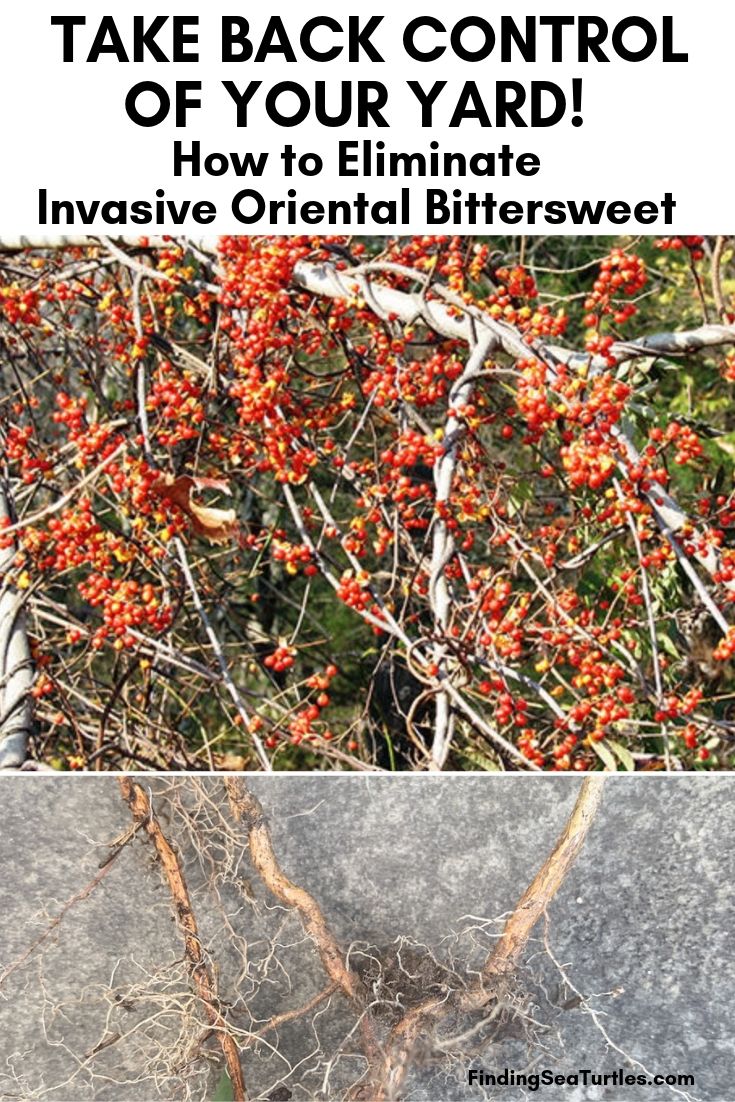
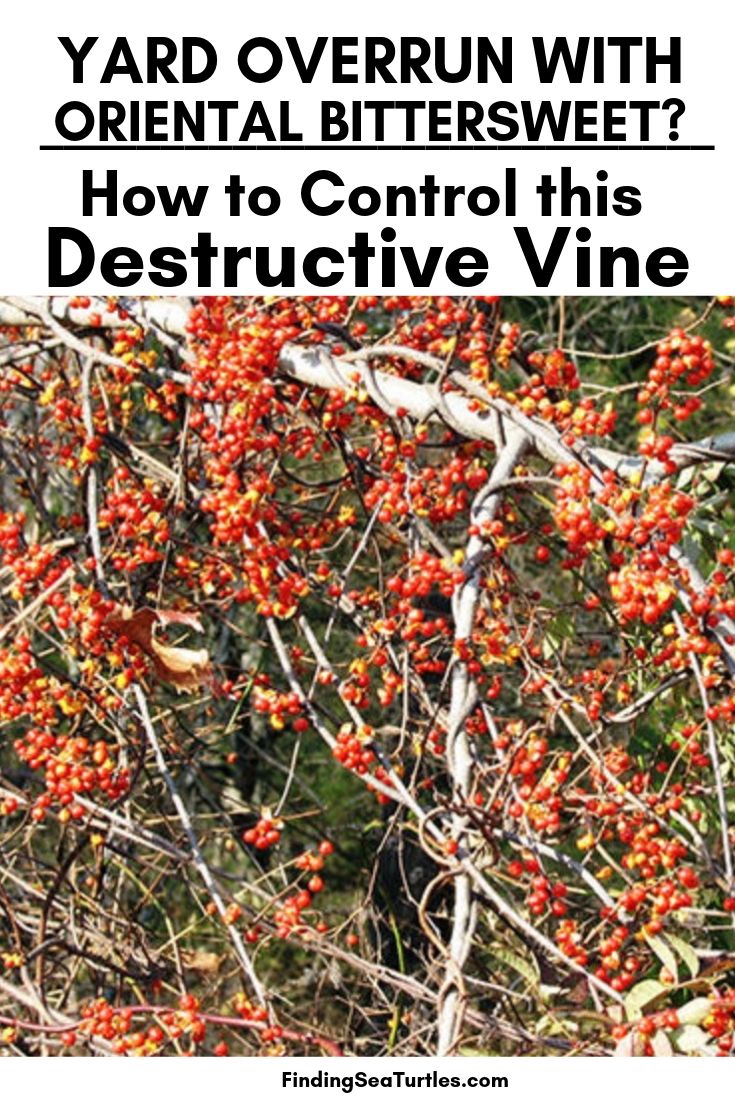

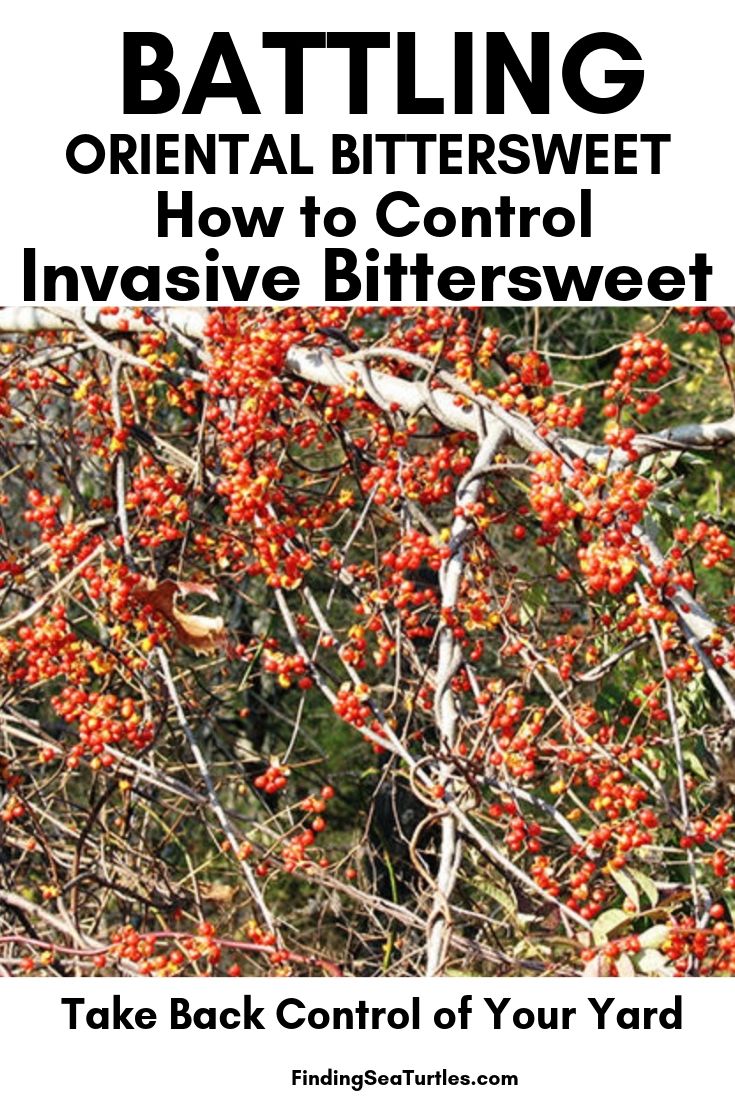
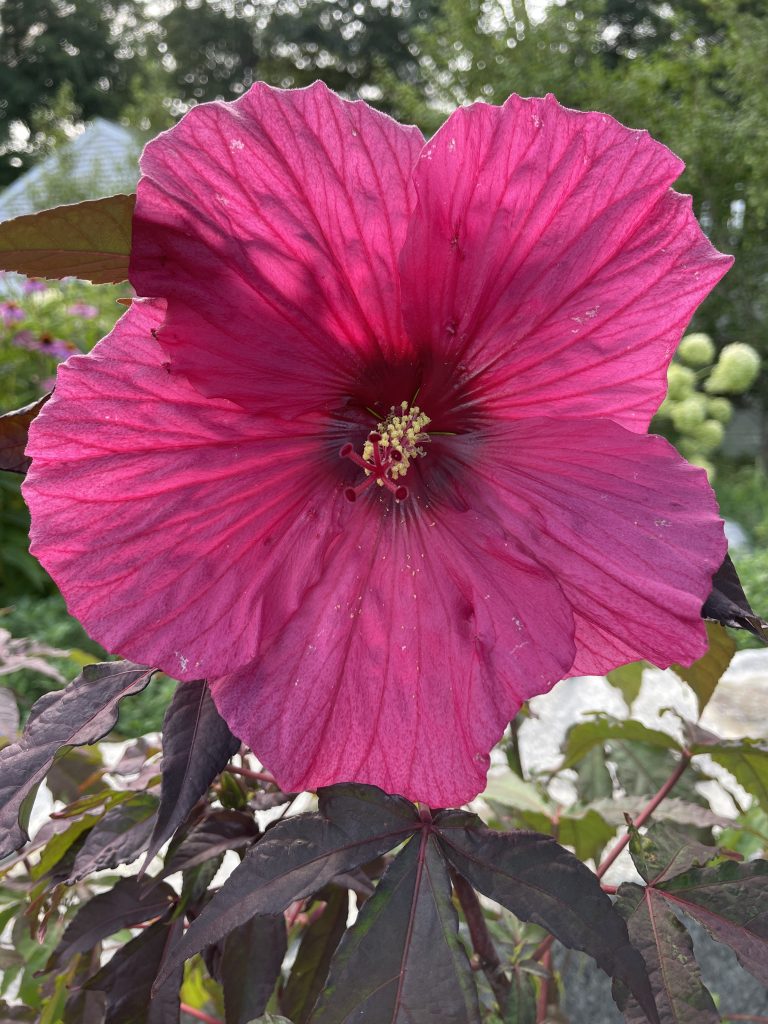

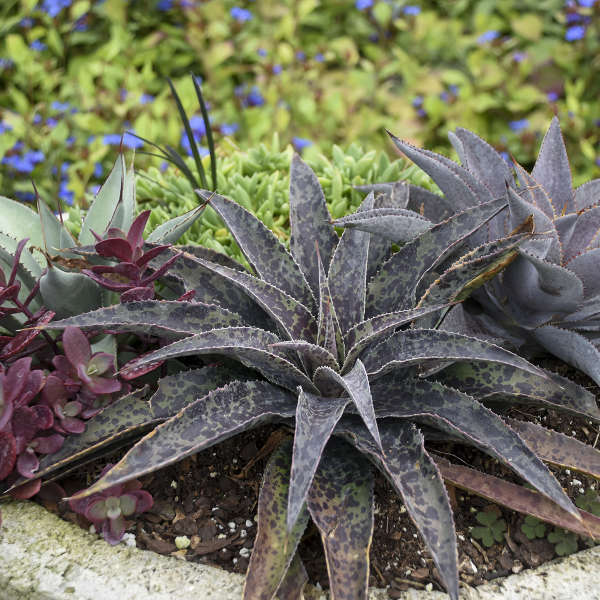

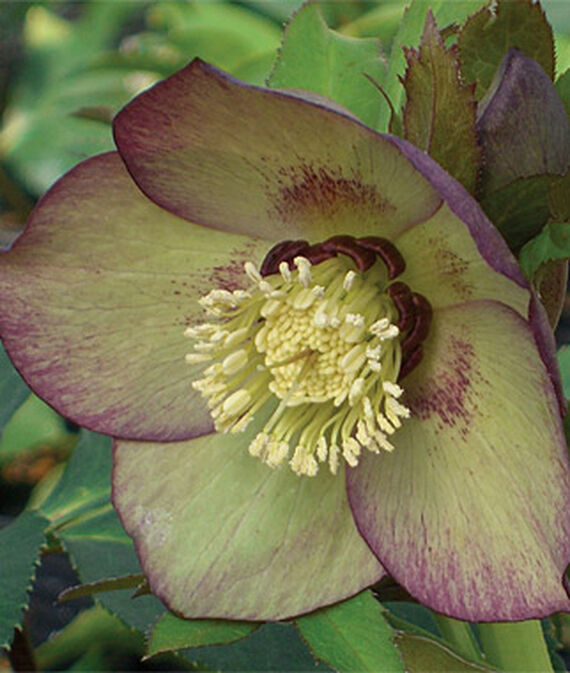

Thank you! I’m through battle #2 in this Great War. The first left me with poison ivy for good measure.
Good Luck, Jeff! It’s tough going .. I know. Mary
I’ve been battling greenbriar and Virginia creeper for 2 years now. I’ve pretty much defeated the creeper with regular cutting and pulling of the roots and vines. Greenbriar is maybe 85% gone but it’s much harder to get out at the root level as they seem to go deeper. The stalks seem to break long before any sort of root structure budges. So I just keep denying them sunlight by using pruning shears to cut them well below the surface and then burying the ends.
It’s only this year that I discovered what I thought was some sort of evergreen shrub in the corner of our yard was actually an insanely huge and twisty overgrowth of oriental bittersweet. I went back there stalking greenbriar vines and realized the bittersweet was already trying to tear apart a newly installed wooden fence on the side of our yard. It’s managed to engulf sections of the chain-link fence behind it to the point I was leery to try to cut it free for fear it may have dissolved the metal underneath. This plant appears to be massive, going from the dead-fall beyond our fence, up trees, down into our yard where it tapped in something that looks like a tree trunk, through the fence into the next-door neighbor’s yard where it made a much smaller shrubby growth to the ground. It had also gone up one of our pine trees. That part I killed a couple of years ago, not knowing what exactly what it was. I just knew it was damaging the trees it was in. So I cut out about 10 inches of the vine on the pine’s trunk at about my head height. Within a week, the growth in our tree and what had crossed to trees in the neighbor’s yard began to die. I’ve been systematically cutting its aerial vines, ground sprouts and major root branches in the corner in short bursts for the past few weeks, hoping to prevent it regrowing over the spring. As I break the big roots, they and the little ones begin to die and are easier for me to pull up. Some of the ones I’ve taken up have been10-15 feet long before they snap. They’ve gone well into the lawn which probably explains why the grass back in that area is hard to keep alive.
It looks as though it’s massive root complex has strangled out several young spindly trees of unknown species at our back fence line. They’ve been standing dead like teepee poles for quite some time and appear to have cured in place (they aren’t rotting that I can tell but are definitely loose in the ground). I’ve noticed that both enormous dead greenbriar vines and bittersweet vines, thick and flexible like Tarzan vines, have been dying and dropping since I began removing all vines from our fences and yard 2 years ago. So I have hope that me hacking away at this tree-like monster over time will remove it from our yard and the dead-fall zone. I really don’t want to use herbicide or other chemicals to kill it. Considering RoundUp comes down in the rain, I don’t want to contribute further to herbicide pollution. (Gross!)
I kind of hate taking it down completely because the local wildlife eats the fruit and the ground growing bits are providing cover for the rabbit warren that’s there under all the piles in the dead-fall. But it’s killed so many trees back there that big limbs constantly drop onto our back fence and into the yard. A few winters back a huge one almost took out the storage shed. Ironically, what saved it was the tangle of dying vines below that swung the limb so it ended up lying across the corner of the fence instead. LOL There are fewer widow-makers up there these days since the vines have been letting them go. So that danger will be ending soon, I hope. I’m definitely tired of having to go get rid of all that dead wood so the lawn guys can mow. Our part of this alleyway between neighborhoods is the only part that still has any living plants in it at all. I think all the invasive vines killed everything else in that space. There are a lot of dead trunks and branches back to the enclosed end. Our open end is actually growing baby pines, oaks and maples. So it may eventually recover if I can keep the vines unhealthy.
I’m researching native plants I can put into the garden I intend to make in the reclaimed soil along the fence to give the birds back some sheltered roost space and also provide some tasty snacks and cover for the animals that frequent our yard. The now-dead twists of thick vine trunk seem to be curing in place and will make fun places to hang decor, planters and water/food stations until they fully deteriorate.:-D
Hi Jolie,
Amazing … I agree it is better to remove the vines and then replace with native plants in support of the local wildlife. Best of luck to you. Mary
Thanks for your article. So I have cut the bittersweet near the ground but the vines are way up in the trees, like 30-40 feet. How do I get the vines out of the trees? Thank you
Hi Becka,
Once the bittersweet vines have been cut, remove as much of the vines that you can reach. I have used a metal rake to remove the cut bittersweet vines that I could reach. The vines that remain in the trees 30 to 40 feet above will dry out and eventually fall out of the tree. I do NOT recommend that you pull those vines out. It isn’t worth the risk of injuring yourself. About 6 years ago we cut bittersweet vines from a smaller tree about 15 feet high. Many of the vines have over time fallen out of the tree. But a few still remain in the tree today. Those vines have dried out and are not at risk of regrowing since they are not near the ground. They need the soil to reroot and grow. At this point – 5 years later they are dead. The next time you have a wind storm, rainstorm, or snowstorm, some of the remaining vines will land on the ground. Gradually they’ll blow out of the tree.
The trick now is to be diligent about making sure the bittersweet does not reemerge from below the ground. I am constantly on the watch for any reemerging bittersweet vines, and I try my best to make sure any young bittersweet vine seedlings do not take root. This is clearly an on-going battle to keep your yard bittersweet free.
Best of luck, Becka!
And thank you for reading our blog! – Mary
Thank you for this article. Do you know if there are any businesses in CT that do this work? Our backyard has a large hill of pachysandra that transitions to woods. It’s the perfect hiding spot for the vines to extend and the root systems are massive. Our neighbors let bittersweet go unmanaged and I am exhausting myself pulling and cutting at bittersweet, virginia creeper, and wild blackberry. I don’t want to spray chemical and damage the small woodland ecosystem we have but I cannot physically manage the growth.
Hi Samantha,
I’m sure any local landscaping or lawn mowing service company can give you an estimate for removing the Oriental Bittersweet. Of course, if they can’t help, they should be able to recommend someone who can remove the vines and clear out the area. I agree that using chemicals is not the best approach to removing the vines.
If you are able to … at the very least cut the vines growing from the ground. Cut vines with lopers or a pruning saw to stop the vines from growing. Try to do this before the vines bloom if they haven’t already. Oriental Bittersweet blooms from May into June. And especially if you are hiring someone to clear this area out since they may not be able to come right away. Eliminating oriental bittersweet is a big undertaking. The Virginia Creeper grows closer to ground level and isn’t too hard to pull out if it isn’t entwined with the bittersweet vines. If they are entwined then the work becomes more labor intensive.
We removed most if not all of our pachysandra from our yard to reduce the number of ticks. Our area is prone to ticks. Here is some info on tick control – maybe you’ve read this already?
You may also have poison ivy (leaves of 3 … leave them be) in that area too. I would wear protective clothing and boots, any time you are in that area. Hope this helps you and you can reclaim your garden area soon. Best of luck! – Mary
I think you should add who brought the orental bittersweet to the US and tell what will happen if we leave this problem alone.
I like how this website told me so many details and how they tell when the bittersweet got here but i would like the information of who brought if and why they brought it. I also like how you told me where it came from but I would like if you told me how it got here and what month it got here. Keep working hard. I love your work. -Elisabeth
I am fighting the long fight against oriental bittersweet. I’m in central Massachusetts. I think I’m winning, time will tell.
I have several areas with large patches of new growth bittersweet, cutting through dozens of small plant and painting the ends with Tordon is a huge task. Can Tordon be sprayed onto the bittersweet? This assumes I’ll be very careful, of course. Spraying would save me many hours, days even.
Thanks for your article, very helpful.
Hi Jay,
I have not used Tordon. So I am unfamiliar with that product. I am extremely reluctant to use any kind of chemicals or products in my garden for the simple reason that they might be toxic. I would check with the EPA website below and your local town government for guidelines in using the Tordon product.
EPA – EPA Lawn & Garden
I know it is tempting to use weed control products especially if you have an incredible amount of bittersweet to remove. There are three things to consider before using any weed control products:
1. If you have young children or pets that will use the same garden area
2. do you have a nearby vegetable garden or if you are growing any food for consumption in the same area
3. do you have any streams, creeks, or running water nearby that could be impacted by the spraying
I personally would not use weed control products in those three instances. No doubt, it is a long hard battle against oriental bittersweet but eventually, you will succeed if you stay with it. After you have removed the oriental bittersweet, you will need to check your garden and yard every year for new growth. In Connecticut, aside from the fact that oriental bittersweet is destructive to plants, shrubs, and trees, the overgrowth could potentially create an environment for ticks. Keeping the tick population at a minimum in our yard is of great importance to us too. Good luck with your battle against Oriental Bittersweet. – Mary from FindingSeaTurtles.com
We recently purchased a property with a lot of bittersweet. In the rock walls, in and around the bottoms and tops of trees. In the meadow. It’s everywhere. This winter I’ve been using a brush cutter/mulcher blade on a strimmer to clear some bigger patches. My hope is that if I do this now with the frost and the snow that the mulched stems left behind *won’t* grow into new brambles (there’s just far too much to bag and dispose of). Any thoughts on winter taking care of what I’ve cut? Or have I just made matters a million times worse for the spring?
Hi Bob,
Unfortunately, if the vines have any seeds (the red berries with yellow outer sheath) those will mostly likely reseed. Leaving the vines where you cut them doesn’t prevent them from rerooting and growing. The cut vines will go dormant over the Winter and some of them could reemerge in the Spring. It sounds like you have a large area to clear. I would focus on cutting the vines around the trees and shrubs you want to save. I would at the very least cut and bag any part of the vine that has the berries. I know it can seem overwhelming at times but it will get easier. Best of luck in ridding your home of the Oriental Bittersweet vine. – Mary I
Thanks so much for the info! I just found out about Bonide Stump & Vine Killer because I have invasive blackberry vines all over my yard. When we bought the house, it was “ooooh, we have blackberries!” Ugh… Now they are everywhere and they are thorny. I also have the dreaded bittersweet so I’ll be ordering the Bonide or whatever the best deal is because I’m thinking I’ll need more than the 8 oz container for this project.